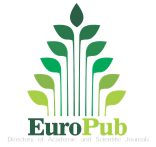Comprehensive Nursing Management of Non-Tophaceous Gout in a 30-Year-Old Male with Vitamin D Deficiency: A Case Study
DOI:
https://doi.org/10.55677/IJCSMR/V4I8-03/2024Keywords:
Gout, nurse-led management, vitamin D deficiencyAbstract
Background: Gout, an inflammatory arthritis linked to hyperuricemia, primarily affects older people. This study highlights the overlooked impact of vitamin D deficiency on urate-lowering therapy in younger patients diagnosed with gout.
Objective: The objective of this study is to discuss comprehensive nursing management of a 30-year-old patient with vitamin D deficiency who was diagnosed with non-tophaceous gout in primary care.
Methods: The case presentation involves a 30-year-old patient who presented to the GP with symptoms of gout. An x-ray ruled out a fracture, which was the patient's primary suspicion after slipping downstairs drunk. Serum uric acid levels were highly elevated, and he was prescribed urate-lowering therapy comprising allopurinol, prednisolone, and naproxen. The patient's symptoms did not improve over time, as flare-ups were frequent, even in the absence of a restricted diet and alcohol intake. On follow-up, the nurse discovered the patient's vitamin D deficiency. The patient was prescribed vitamin D supplements alongside urate-lowering therapy.
Results: Following combined treatment with vitamin D supplements and urate-lowering therapy, serum uric acid levels reduced significantly, achieving <6 mg/dL. During the eight-month follow-up, the patient only experienced a minor episode of a flare once.
Conclusion: This case study demonstrates the importance of assessing vitamin D deficiency in gout patients, especially the younger ones. Addressing vitamin D deficiency, if present, together with the administration of standard urate-lowering therapy, can improve outcomes and the frequency of flare-ups in gout patients.
References
Abhishek, A. (2017). Managing gout flares in the elderly: Practical considerations. Drugs & Aging, 34(12), 873–880. https://doi.org/10.1007/s40266-017-0512-4
Anderson, P. H., Turner, A. G., & Morris, H. A. (2012). Vitamin D actions to regulate calcium and skeletal homeostasis. Clinical Biochemistry, 45(12), 880–886. https://doi.org/10.1016/j.clinbiochem.2012.02.020
Benedik, E. (2022). Sources of vitamin D for humans. International Journal for Vitamin and Nutrition Research, 92(2), 118–125. https://doi.org/10.1024/0300-9831/a000733
Borghi, C., & Perez-Ruiz, F. (2016). Urate lowering therapies in the treatment of gout: A systematic review and meta-analysis. European Review for Medical and Pharmacological Sciences, 20, 983–992.
Charoenngam, N., Ponvilawan, B., & Ungprasert, P. (2020). Vitamin D insufficiency and deficiency are associated with a higher level of serum uric acid: A systematic review and meta-analysis. Modern Rheumatology, 30(2), 385–390. https://doi.org/10.1080/14397595.2019.1575000
Choi, H. K., & Stone, J. H. (2023). Epidemiology of gout. In J. H. Stone (Ed.), A Clinician's Pearls & Myths in Rheumatology (pp. 513–517). Springer International Publishing. https://doi.org/10.1007/978-3-031-23488-0_35
Cui, A., Zhang, T., Xiao, P., Fan, Z., Wang, H., & Zhuang, Y. (2023). Global and regional prevalence of vitamin D deficiency in population-based studies from 2000 to 2022: A pooled analysis of 7.9 million participants. Frontiers in Nutrition, 10, 1070808. https://doi.org/10.3389/fnut.2023.1070808
Day, R. O., Lau, W., Stocker, S. L., Aung, E., Coleshill, M. J., Schulz, M., Bechara, J., Carland, J. E., Graham, G. G., Williams, K. M., & McLachlan, A. J. (2019). Management of gout in older people. Journal of Pharmacy Practice and Research, 49(1), 90–97. https://doi.org/10.1002/jppr.1511
Dehlin, M., Jacobsson, L., & Roddy, E. (2020). Global epidemiology of gout: Prevalence, incidence, treatment patterns and risk factors. Nature Reviews Rheumatology, 16(7), 380–390. https://doi.org/10.1038/s41584-020-0441-1
Doherty, M., Jenkins, W., Richardson, H., Sarmanova, A., Abhishek, A., Ashton, D., Barclay, C., Doherty, S., Duley, L., Hatton, R., Rees, F., Stevenson, M., & Zhang, W. (2018). Efficacy and cost-effectiveness of nurse-led care involving education and engagement of patients and a treat-to-target urate-lowering strategy versus usual care for gout: A randomised controlled trial. The Lancet, 392(10156), 1403–1412. https://doi.org/10.1016/S0140-6736(18)32158-5
Fenando, A., Rednam, M., Gujarathi, R., & Widrich, J. (2024). Gout. In StatPearls. StatPearls Publishing. http://www.ncbi.nlm.nih.gov/books/NBK546606/
Fuller, A., Jenkins, W., Doherty, M., & Abhishek, A. (2019). Nurse-led care is preferred over GP-led care of gout and improves gout outcomes: Results of Nottingham Gout Treatment Trial follow-up study. Rheumatology, kez333. https://doi.org/10.1093/rheumatology/kez333
Han, Y., Zhang, Y., & Zeng, X. (2022). Assessment of causal associations between uric acid and 25-hydroxyvitamin D levels. Frontiers in Endocrinology, 13, 1024675. https://doi.org/10.3389/fendo.2022.1024675
He, Q., Mok, T.-N., Sin, T.-H., Yin, J., Li, S., Yin, Y., Ming, W.-K., & Feng, B. (2023). Global, regional, and national prevalence of gout from 1990 to 2019: Age-period-cohort analysis with future burden prediction. JMIR Public Health and Surveillance, 9, e45943. https://doi.org/10.2196/45943
Nimitphong, H., Saetung, S., Chailurkit, L., Chanprasertyothin, S., & Ongphiphadhanakul, B. (2021). Vitamin D supplementation is associated with serum uric acid concentration in patients with prediabetes and hyperuricemia. Journal of Clinical & Translational Endocrinology, 24, 100255. https://doi.org/10.1016/j.jcte.2021.100255
Peng, H., Li, H., Li, C., Chao, X., Zhang, Q., & Zhang, Y. (2013). Association between vitamin D insufficiency and elevated serum uric acid among middle-aged and elderly Chinese Han women. PLoS ONE, 8(4), e61159. https://doi.org/10.1371/journal.pone.0061159
Roth, D. E., Abrams, S. A., Aloia, J., Bergeron, G., Bourassa, M. W., Brown, K. H., Calvo, M. S., Cashman, K. D., Combs, G., De‐Regil, L. M., Jefferds, M. E., Jones, K. S., Kapner, H., Martineau, A. R., Neufeld, L. M., Schleicher, R. L., Thacher, T. D., & Whiting, S. J. (2018). Global prevalence and disease burden of vitamin D deficiency: A roadmap for action in low‐ and middle‐income countries. Annals of the New York Academy of Sciences, 1430(1), 44–79. https://doi.org/10.1111/nyas.13968
Russell, M. D., Rutherford, A. I., Ellis, B., Norton, S., Douiri, A., Gulliford, M. C., Cope, A. P., & Galloway, J. B. (2022). Management of gout following 2016/2017 European (EULAR) and British (BSR) guidelines: An interrupted time-series analysis in the United Kingdom. The Lancet Regional Health - Europe, 18, 100416. https://doi.org/10.1016/j.lanepe.2022.100416
Singh, J. A., & Gaffo, A. (2020). Gout epidemiology and comorbidities. Seminars in Arthritis and Rheumatism, 50(3), S11–S16. https://doi.org/10.1016/j.semarthrit.2020.04.008
Zhang, Y.-Y., Qiu, H.-B., & Tian, J.-W. (2020). Association between vitamin D and hyperuricemia among adults in the United States. Frontiers in Nutrition, 7, 592777. https://doi.org/10.3389/fnut.2020.592777
Downloads
Published
Issue
Section
License
Copyright (c) 2024 International Journal of Clinical Science and Medical Research

This work is licensed under a Creative Commons Attribution 4.0 International License.












